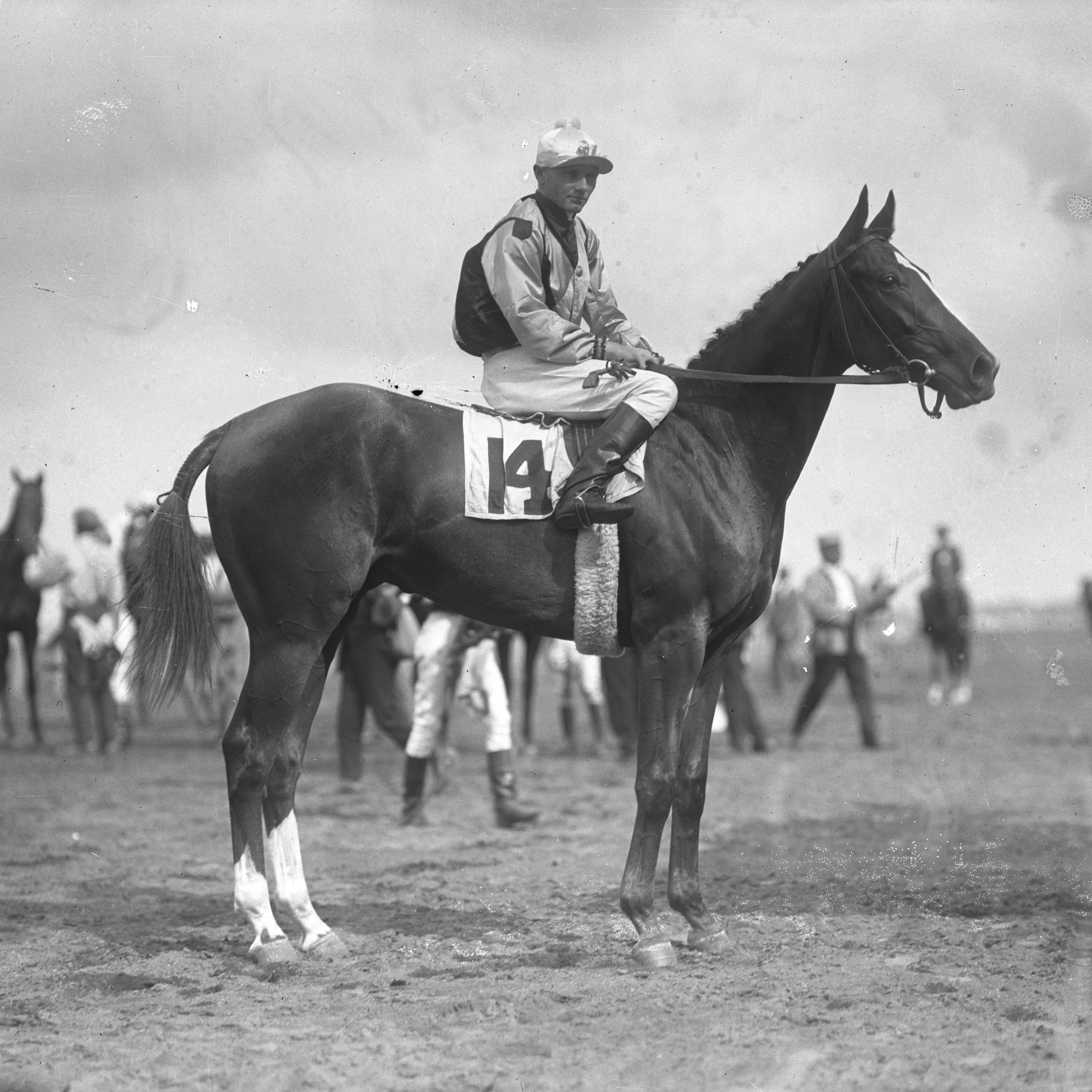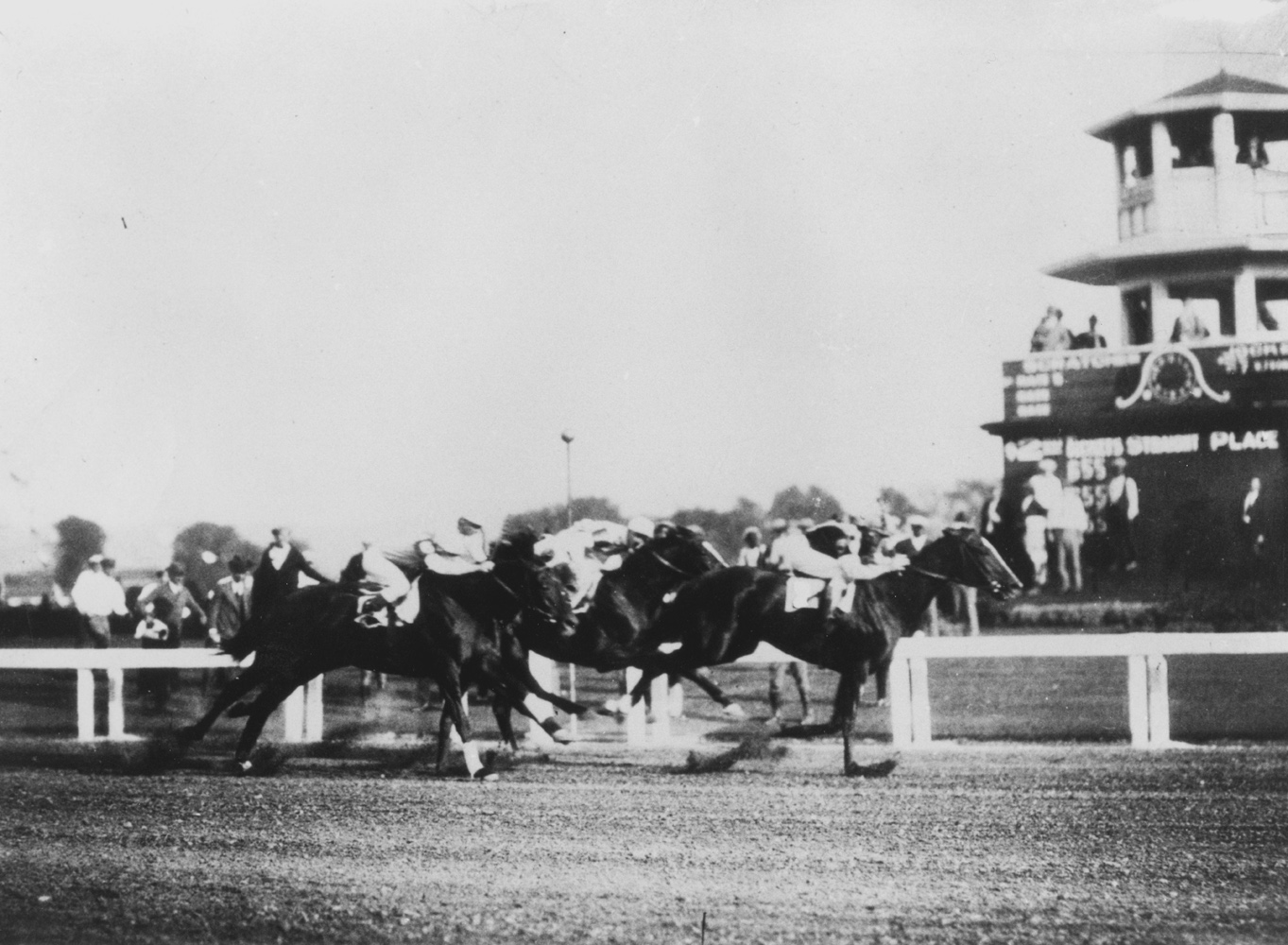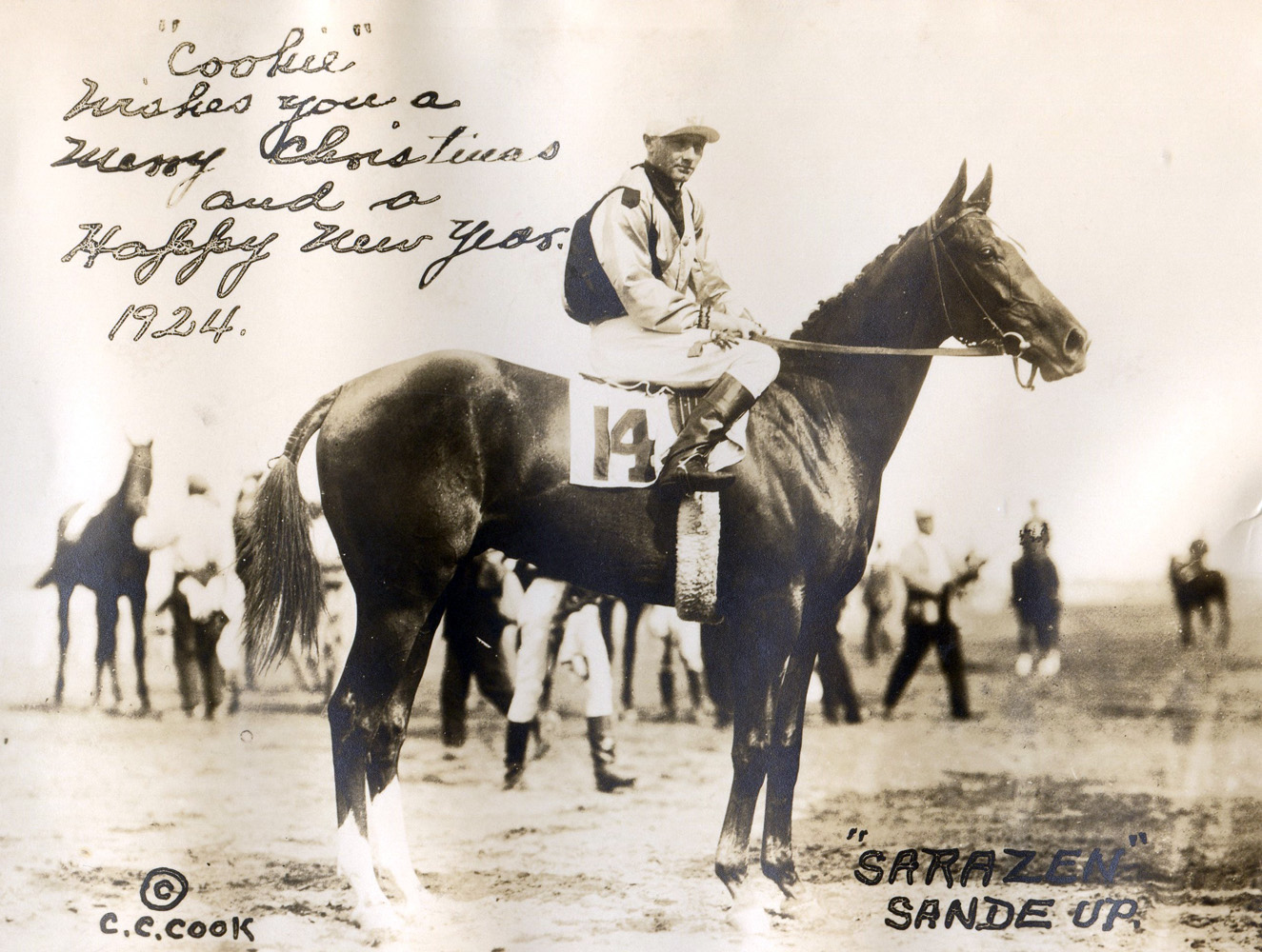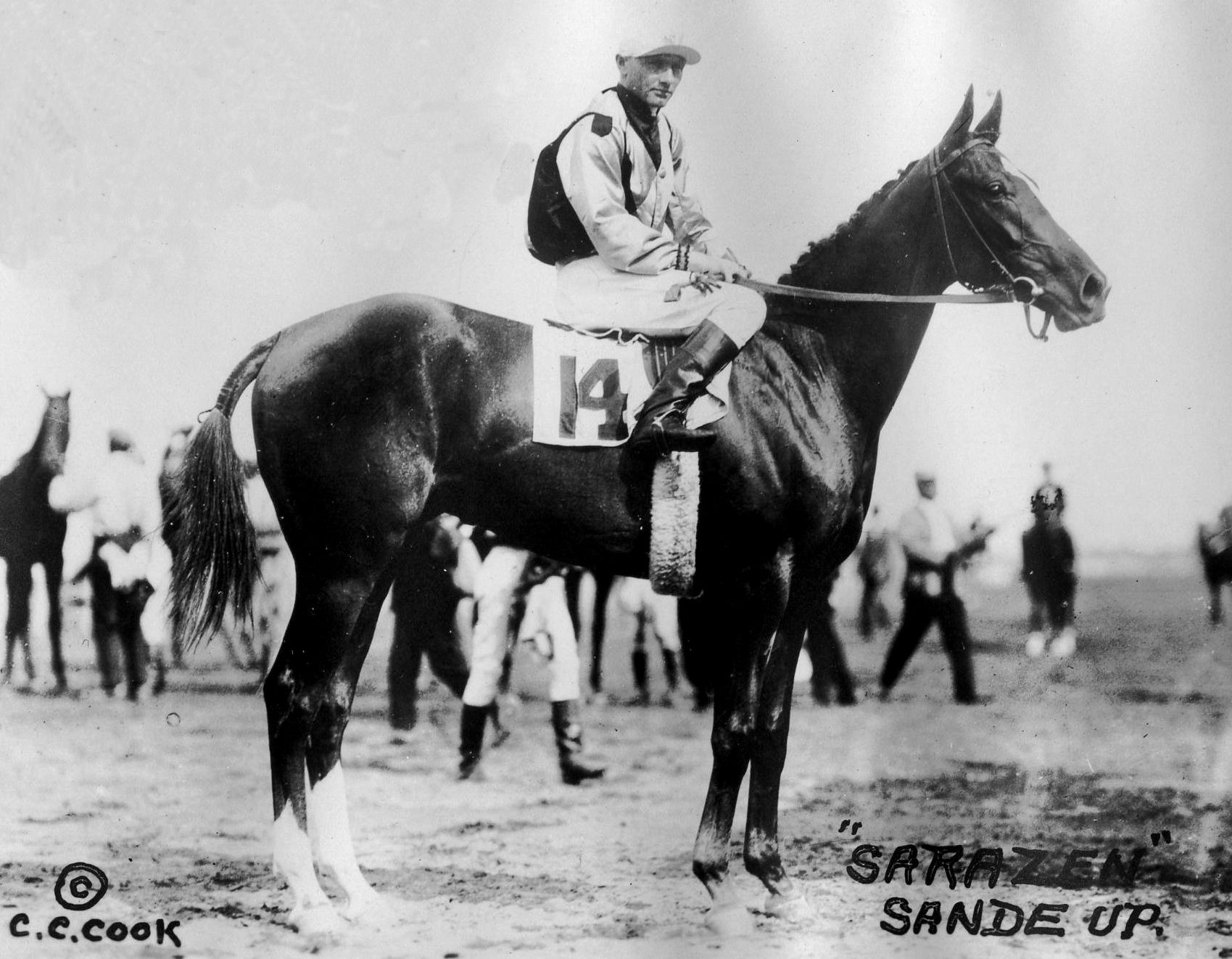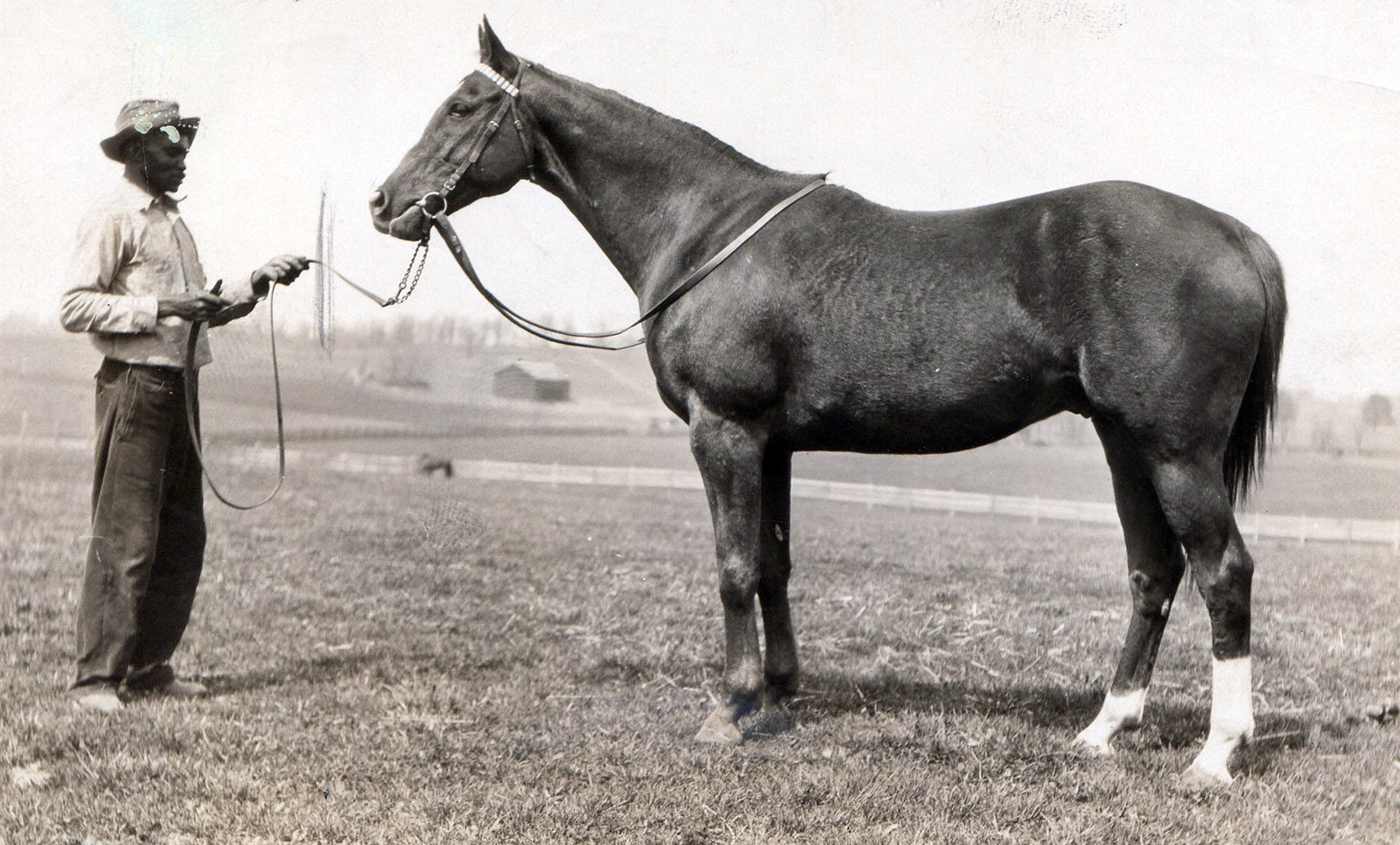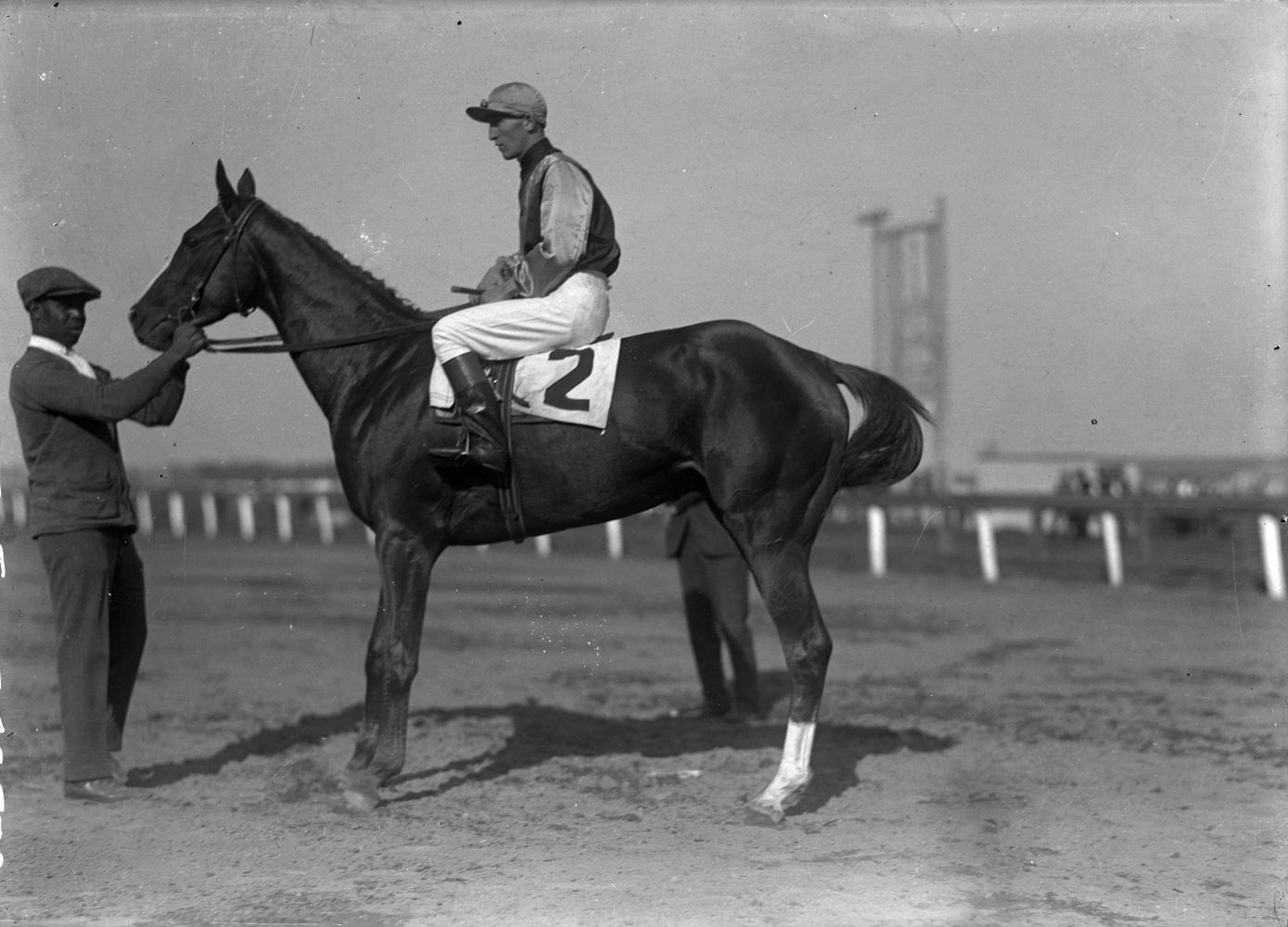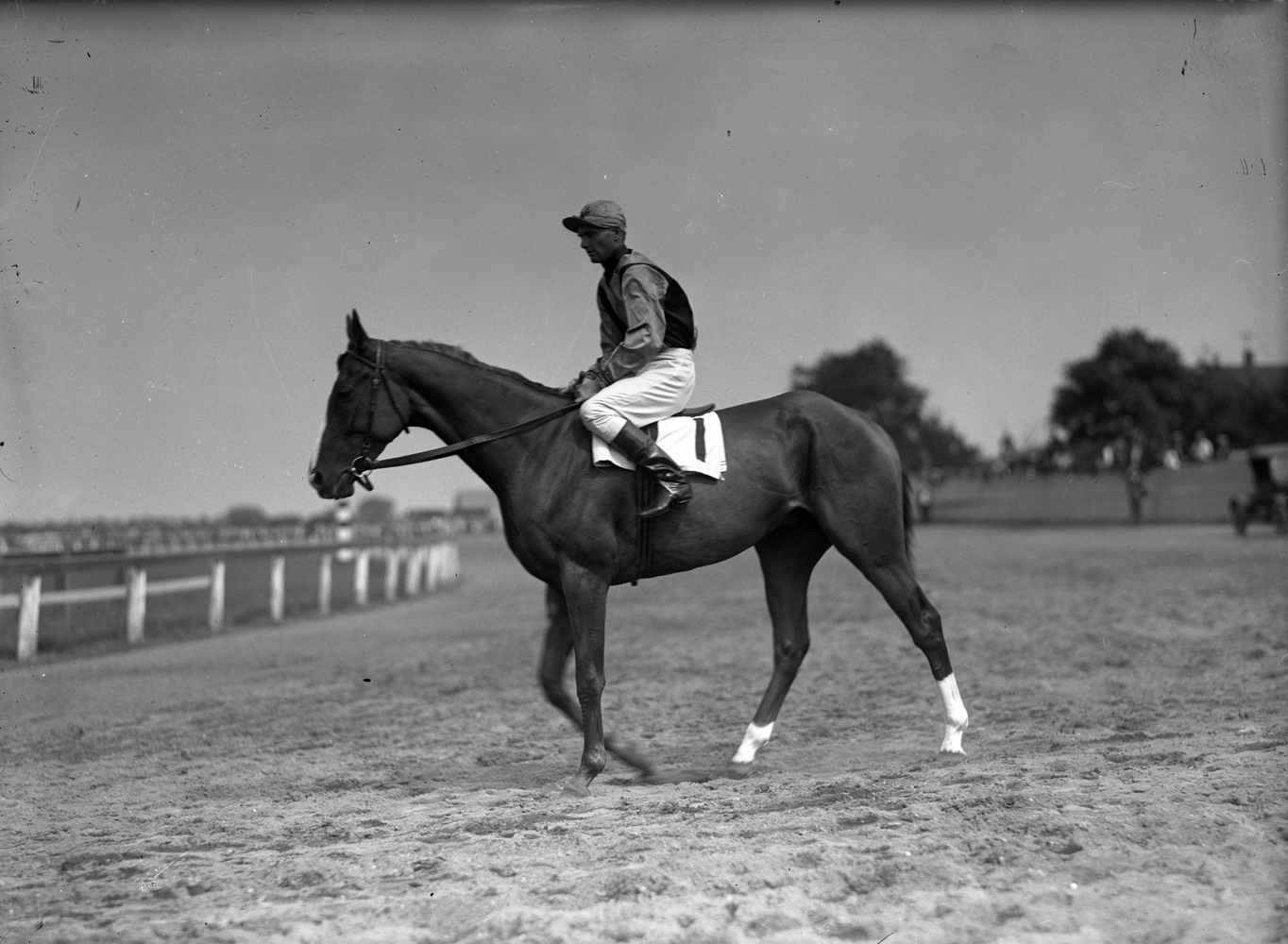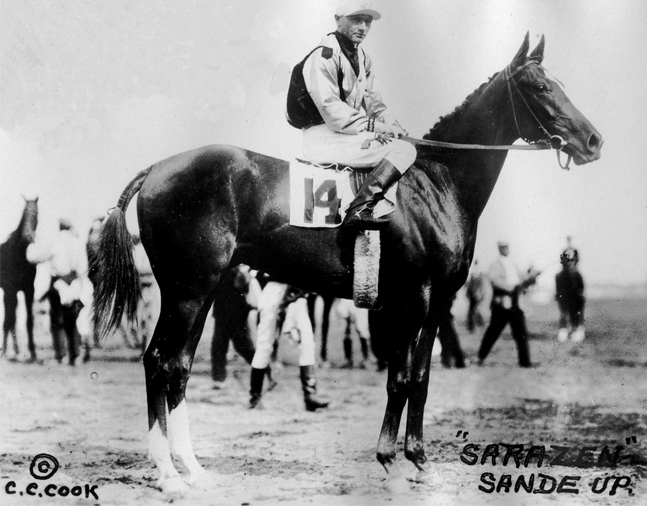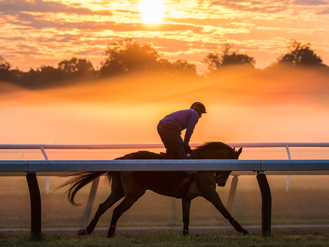Sarazen (KY)
Regarded as the top racehorse in America in 1924 and 1925, Sarazen was a 15-hand gelded son of High Time out of the Box mare Rush Box. Bred by Dr. Marius E. Johnston, Sarazen was owned early in his career by Col. Phil T. Chinn before being sold to Mrs. W. K. Vanderbilt III and trained by Max Hirsch after three starts as a 2-year-old.
Racing Record
55
Starts
| 1923 | 10 | 10 | 0 | 0 | $37880 $37,880 |
| 1924 | 12 | 8 | 1 | 1 | $95640 $95,640 |
| 1925 | 10 | 5 | 0 | 1 | $48160 $48,160 |
| 1926 | 14 | 4 | 1 | 1 | $42970 $42,970 |
| 1927 | 4 | 0 | 0 | 1 | $100 $100 |
| 1928 | 5 | 0 | 0 | 2 | $250 $250 |
Biography
Regarded as the top racehorse in America in 1924 and 1925, Sarazen was a 15-hand gelded son of High Time out of the Box mare Rush Box. Bred by Dr. Marius E. Johnston, Sarazen was owned early in his career by Col. Phil T. Chinn before being sold to Mrs. W. K. Vanderbilt III and trained by Max Hirsch after three starts as a 2-year-old.
Named after golfer Gene Sarazen, the chestnut gelding was undefeated in 10 starts as a 2-year-old in 1923. His wins that year included the Champagne Stakes, Oakdale Handicap, National Stakes, Laurel Special, and Pimlico Serial Weight-for-Age Race No. 2.
After finishing second in his 3-year-old debut in 1924, Sarazen won the Carter Handicap, Fleetwing Handicap, Saranac Handicap, Huron Handicap, Manhattan Handicap (defeating Belmont winner Mad Play), Arverne Handicap (defeating Zev), International Special No. 3, and Maryland Handicap. His greatest race was the International Special No. 3 on Oct. 11, at Latonia. Before a crowd of 60,000, Sarazen defeated English standout Epinard by 1½ lengths, setting a record of 2:00⅘ for 1¼ miles (Whisk Broom II was credited with the world mark of two minutes flat in the 1913 Suburban at Belmont, but it was generally known that his clocking had been made from the wrong pole). Overall, Sarazen owned a record of 8-1-1 from 12 starts and earnings of 95,640 as a sophomore.
Sarazen won half of his 10 starts as a 4-year-old. He won the Dixie Handicap, Metropolitan Handicap, and Fleetwing Handicap — all under 130 pounds — and set a track record at Bowie in winning the G. D. Bryan Memorial Handicap under 126 pounds.
As a 5-year-old, Sarazen was again recognized as the top handicapper, winning the Dixie Handicap, Metropolitan Handicap, and Mount Vernon Handicap. After the Mount Vernon Handicap, however, Sarazen became a sulker and an incorrigible terror to his trainer and to the assistant starters at the track. Sarazen never won another race after July of his 5-year-old season.
Hirsch, one of the top trainers of his or any era, tried every trick in the book to coax Sarazen into giving his best efforts, but it was to no avail. The grumpy gelding failed to win any of his final 16 career starts and was retired with a career record of 26-2-6 from 55 starts earnings of $225,000, fifth all time.
In 1937, Sarazen made his final public appearance in a parade of great geldings at Keeneland. Suffering from infirmities of his 19 years, Sarazen was euthanized three years later..
“There was no better horse than Sarazen during his time,” said Chinn. “Of those he met, he beat them all, mud or dry, cyclone or volcano, beat them at the gate and beat them under the wire.”
Achievements
Champion 3-Year-Old Male — 1923
Horse of the Year — 1924
Horse of the Year — 1925
Champion Older Male — 1925
Champion Older Male — 1926
Media
